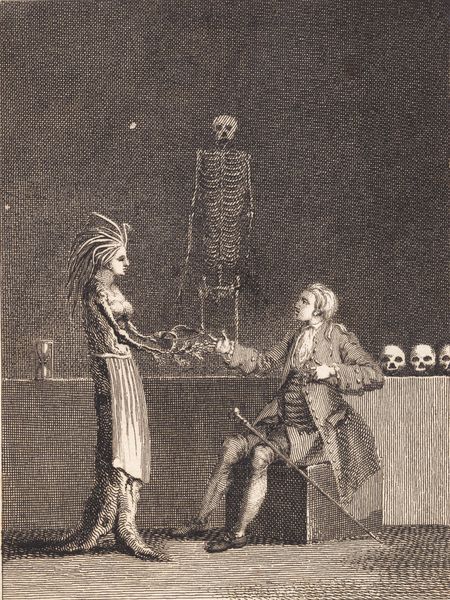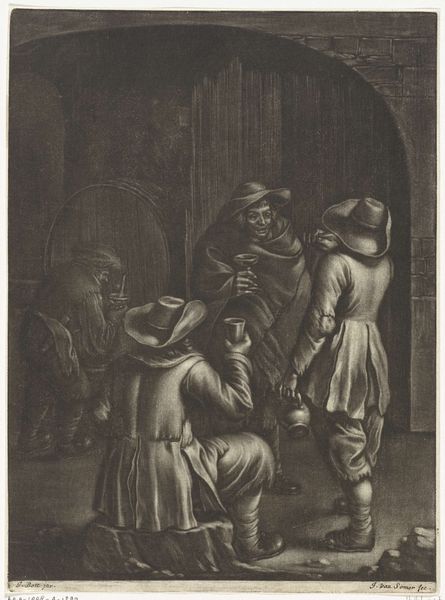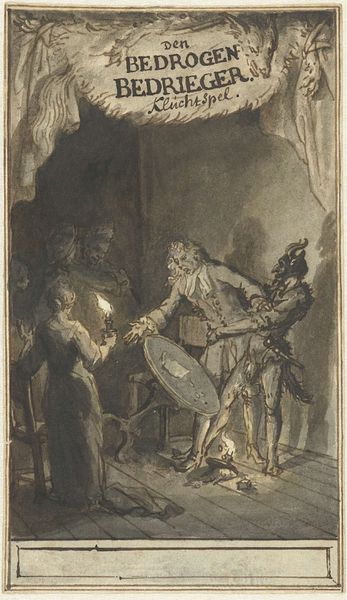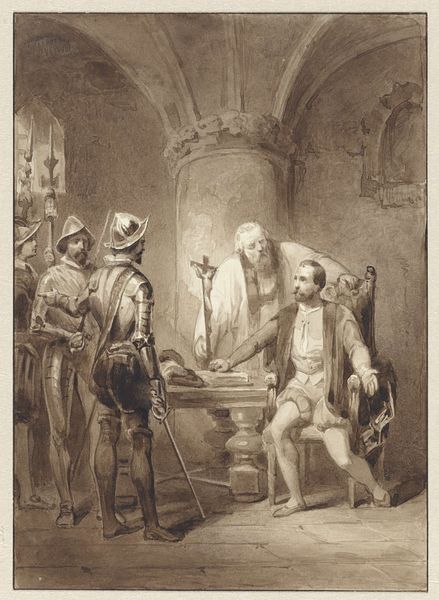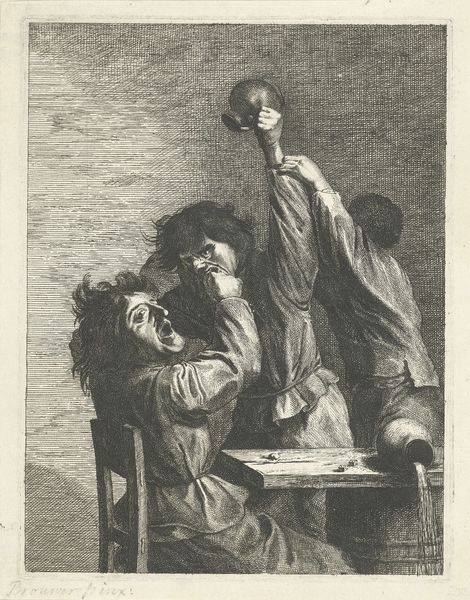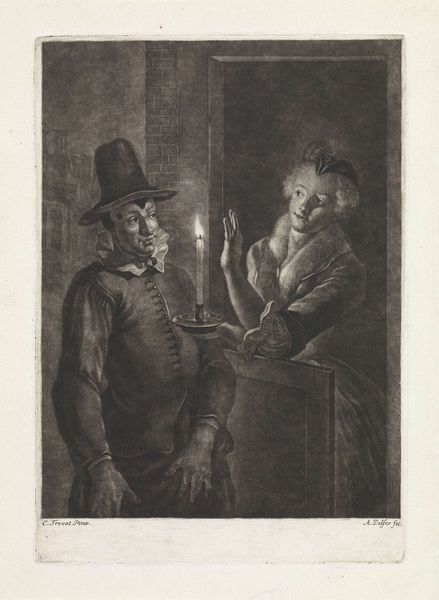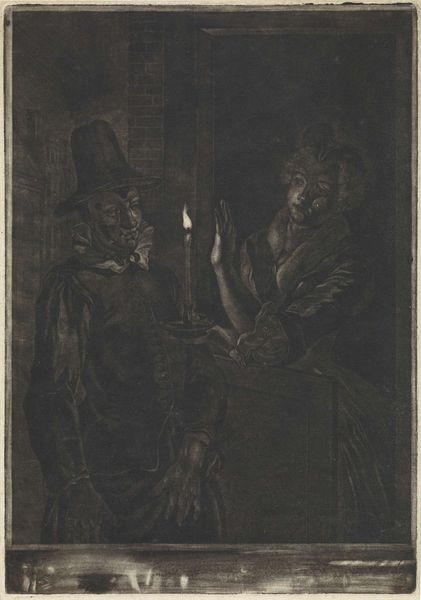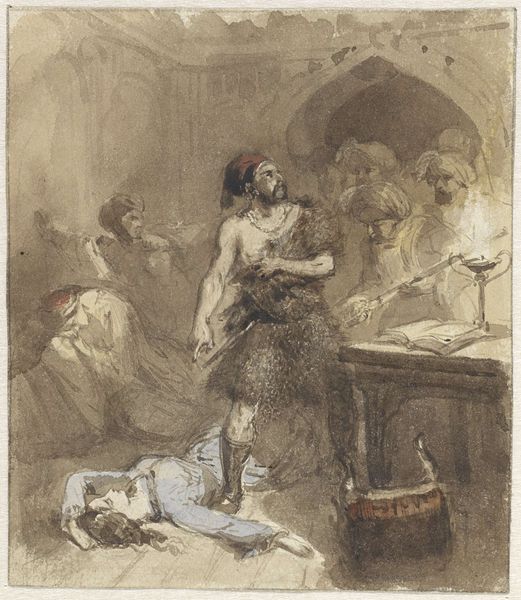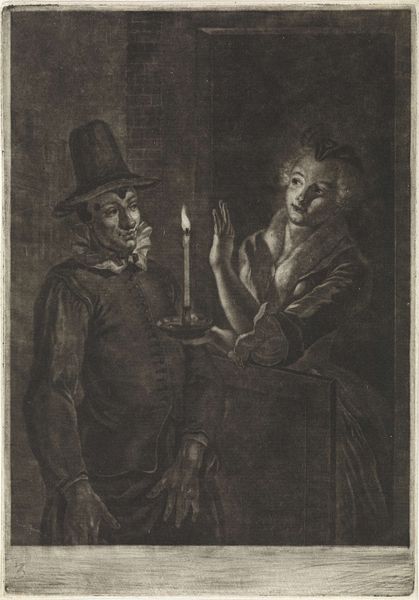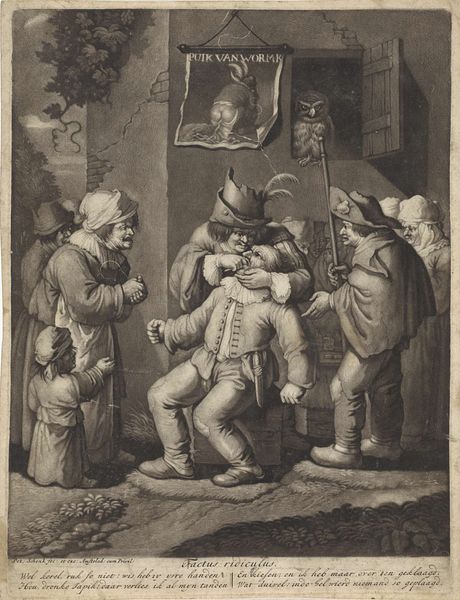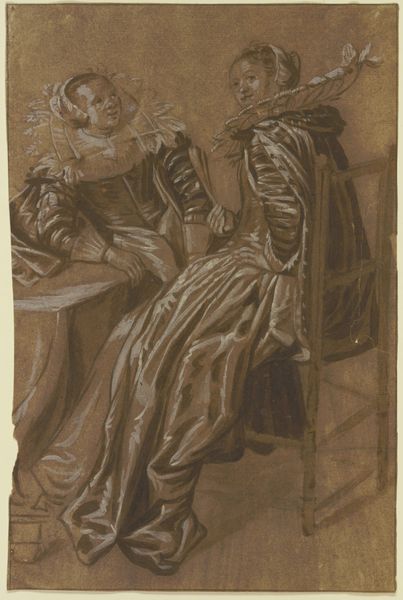
The Doctor´s Wife Reveals her Husband´s Intention of Anatomising Niels Klim 1785 - 1787
0:00
0:00
Dimensions: 42 cm (height) x 35.5 cm (width) (Netto), 50.9 cm (height) x 44.4 cm (width) x 3.5 cm (depth) (Brutto)
Editor: This is Nicolai Abildgaard’s "The Doctor’s Wife Reveals her Husband’s Intention of Anatomising Niels Klim," painted sometime between 1785 and 1787. It has such a theatrical, almost gothic, atmosphere. I’m really struck by the use of light and shadow, especially the eerie presence of what seems to be a skeleton looming in the background. What do you see in this piece? Curator: It's fascinating, isn't it? Abildgaard uses the theatrical to comment on the scientific aspirations of the era, viewed with growing skepticism. Note the skulls clustered to the left - symbols of mortality being used to reinforce a commentary. The Enlightenment emphasis on reason and scientific inquiry had its critics. Abildgaard seems to tap into anxieties surrounding these explorations into the human body. How does that darker undercurrent change your initial reaction? Editor: That totally shifts my perception! It's not just gothic, it's critical. So, the painting is pushing back against the unbridled pursuit of scientific knowledge and maybe highlighting some moral concerns. I guess the wife's reveal is more of a moral warning than a simple domestic drama? Curator: Precisely. Think of the context – anatomy was a controversial practice, raising questions about the boundaries of permissible knowledge and the treatment of the dead. Abildgaard stages this drama to make us, the viewers, consider our own ethical stance towards this scientific fervor. To whom does a body belong, even after death? Editor: That’s a perspective I hadn’t considered before. I was initially drawn in by the spooky atmosphere but now I recognize a deeper commentary on the societal implications of scientific advancement during the Enlightenment. Thanks! Curator: And thanks to you, I re-evaluated the gendered dynamics. We must remember, too, the artist shapes meaning, just as socio-historical forces do.
Comments
No comments
Be the first to comment and join the conversation on the ultimate creative platform.
